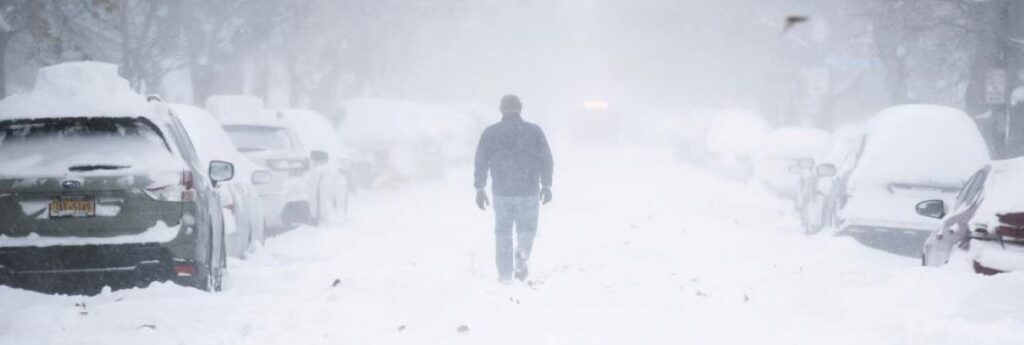Piles of snow, in some places taller than most people, buried parts of western and northern New York as a lake-effect storm pounded areas east of Lake Erie and Lake Ontario over the weekend. The squall also walloped Niagara Region, causing numerous accidents and prompting Ontario Provincial Police to urge drivers to avoid travel due to hazardous roads, poor visibility and a thick blanket of snow.
However, it was south of the border that bore the brunt of the historic storm, including nearly 6-1/2 feet (196 cm.) of snow reported in the Buffalo suburb of Orchard Park, home to the NFL’s Buffalo Bills. Partway across the state, the town of Natural Bridge, near the Fort Drum Army base, reported just under 6 feet (1.8 m.).
The snowfall in some spots ranked among the highest ever recorded in the area, rivaling the eye-popping amounts that fell during similar storms in 2014 and 1945.
The snowfall totals, which began accumulating Thursday night in some spots, “would be on the order of historic not only for any time of year but for any part of the country,” said National Weather Service meteorologist Frank Pereira, at NWS headquarters in College Park, Maryland.
“This has been a historic storm. Without a doubt, this is one for the record books,” New York Gov. Kathy Hochul said at a briefing Sunday.
The lake-effect storm, caused by cold air picking up moisture from warmer lakes, created narrow bands of windblown snow that dumped feet of snow in some communities, while leaving towns a short drive away relatively unscathed.
It wreaked havoc on some roadways, as trucks that took to smaller backroads to avoid a closure on parts of an interstate in the area ended up in mass gridlock that Erie County Executive Mark Poloncarz described on social media as “tractor-trailer demo derby day.”
The snowfall forced the National Football League to move Sunday’s between the Bills and Cleveland Browns to Detroit.
Partial sunshine and a break from the snow came in some of the hardest-hit areas south of Buffalo’s centre Saturday as the snow bands shifted north.
Gov. Hochul deployed about 70 members of the National Guard to help with snow removal in some of the hardest-hit areas.
Poloncarz tweeted that two people in the Buffalo area died “associated with cardiac events related to exertion during shoveling/snow blowing.”
The lake-effect has also dumped up to 2 feet (0.6 meters) of snow in some communities in Michigan south of Lake Superior and east of Lake Michigan.
Buffalo has experience with dramatic lake-effect snowstorms, few worse than the one that struck in November 2014. That epic storm dumped 7 feet (2 m.) of snow on some communities over three days, collapsing roofs and trapping drivers in more than 100 vehicles on a lakeside stretch of the New York State Thruway.
Niagara was in line to receive 25 to 50 cm. (10-20 inches), while elsewhere in the province Environment Canada had forecast 50 to 80 cm. of snow in Owen Sound by late Sunday, and 10 to 20 cm. in Parry Sound/Muskoka.
The agency also warned of reduced visibility in the Lake Nipissing communities of North Bay and West Nipissing, where 25 to 50 cm. of snow were expected by Sunday morning.

